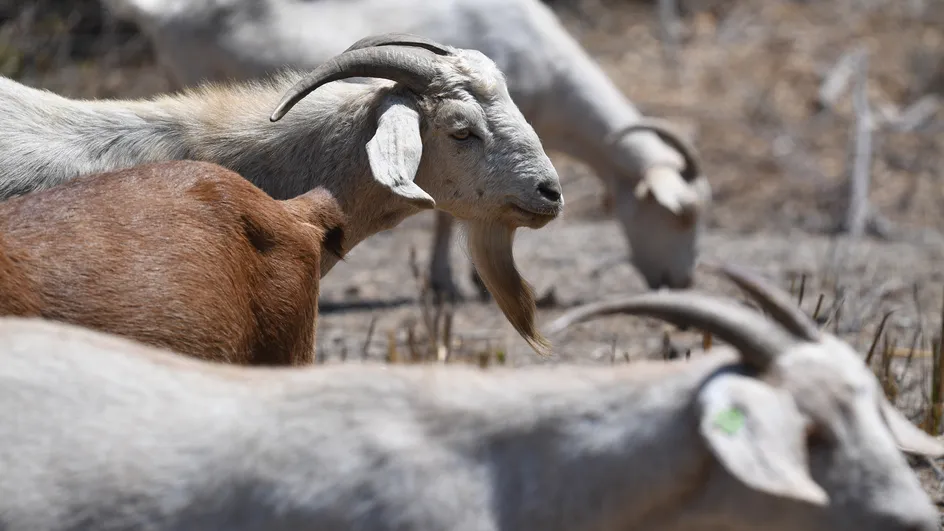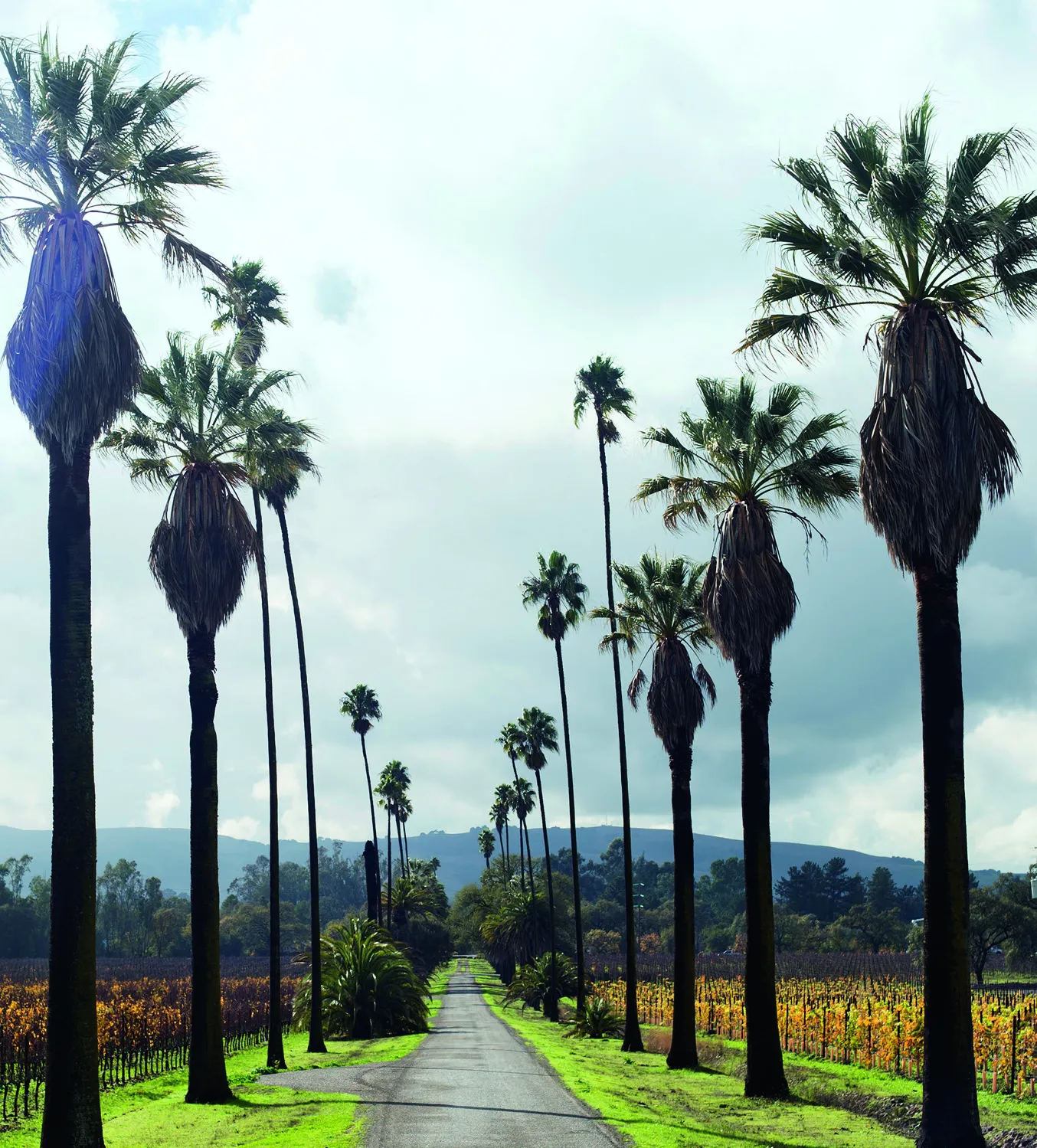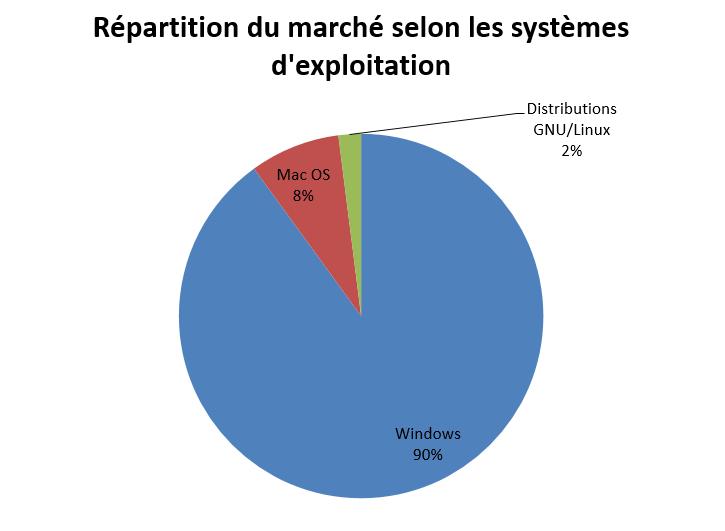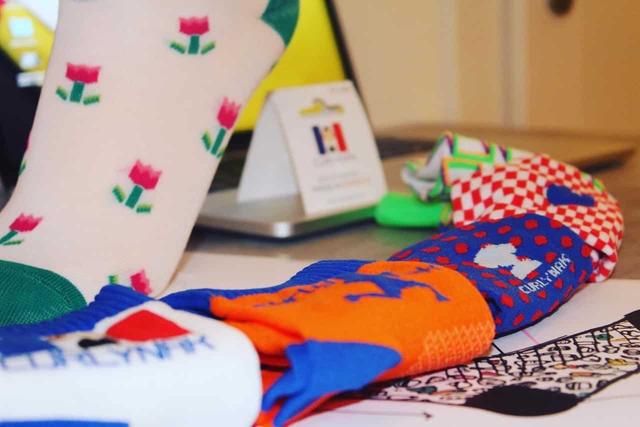The JMJ cross, an Olympic flame of faith
Cyprien Viet - Vatican City
Like the Olympic flame relay has become a preparatory ritual for the Olympic Games, that of the JMJ cross has become an opportunity to create a chain of fraternity through the countries chosen for the organization of the World Youth Days.
The origin dates back to 1983: within the framework of the holy year of redemption, Pope John Paul II had hoped that a cross, symbol of faith, be trained near the major altar of the Saint-SaintPierre, so that all pilgrims, visitors and viewers can see her.According to his desire, a large wooden cross over 3 meters high (3.80 m) is then installed near the altar.
At the end of this holy year, after the closure of the holy door, addressing young people from the International Center for Young San Lorenzo in Rome, the Pope, through them, confides this cross to youth around the world: "VeryDear young people, at the end of the holy year, I entrust you with the sign of this jubilee year: the cross of Christ!Wear it in the world as a sign of the love of the Lord Jesus for humanity and announce to all that there is salvation and redemption only in the dead and risen Christ ".
Young people welcome this wish of the Pope.They carry the cross to the San Lorenzo Center, which then becomes its usual home, every time it comes back from a pilgrimage in the world.
First wanderings in 1984
The Cross of the Holy Year (name which is allocated to him) made his first pilgrimage in July 1984, in Munich in Germany for Katholikentag (Catholics Day).This simple wooden cross, without a particular distinctive sign, becomes a symbol of the will of the Pope, who wants to invite young people to follow Jesus in simplicity and count.During the Eucharistic Closing celebration, in the presence of 120,000 people gathered in the city stadium, the cross is placed next to the altar so as to be seen from all.Then young people wear the cross in Lourdes, in Paray-le-Monial, and in other cities in France.
She returned to Germany in September 1984, then in January 1985, in response to the wish of the Holy Father, a group of young Germans carries La Croix in Prague, in Czechoslovakia.This first passage of the iron curtain which then divided Europe is then a personal encouragement of Jean-Paul II, the Polish pope, to his Czechoslovak friend Cardinal Tomasek, also a great defender of religious freedom in the face of communist totalitarianism.
The year 1985 was proclaimed by the UN the International Youth Year.Rameaux Sunday, 300,000 young people participate in a meeting with the Pope on Place Saint-Pierre and the East Cross with them.That year, it was also worn in different parts of Europe: Italy, France, Luxembourg, Ireland, Scotland, Malta and Germany;Everywhere it is led on pilgrimage, protagonist of the Stations of the Cross in the streets of each city which welcomes it and presents to the various gatherings of young people.
Still in 1985 Pope John Paul II announced that from Sunday of the following twigs, there would be a World Youth Day each year.The World Youth Days have been celebrated since each year at the diocesan level, and from 1987, every two or three years, as part of this celebration, is a great world meeting of young people with the Pope, each timein a city of a different continent.
In 1986, La Croix was present at the celebration of the first World Youth Day in the diocese of Rome, which took place at the Basilica of Saint-Jean-de-Latran, on Sunday branches.In addition, that year, the cross circulates again in Italy, France and Switzerland.
The first trips outside Europe
In 1987, World Youth Day, celebrated in Buenos Aires (Argentina), gathering young people around the world.It is also the first time that the cross has entered the American continent, where it goes a few days before the celebrations.Then the cross returns to Europe for some young people in Germany, then in France and Greece.It is present at the Synod of the Bishops on the Laïcs, which takes place in Rome that year, from October 1 to 30.
En 1988, après la célébration de la IIIe Journée Mondiale de la Jeunesse du diocèse de Rome, le Dimanche des Rameaux, la Croix est portée en Allemagne, puis en France, et elle traverse de nouveau l’Atlantique, et cette fois pour se rendre à Steubenville aux États-Unis.
In 1989, the cross went around the dioceses of the Netherlands;In August she went to Spain, to Saint-Jacques-de-Compostelle, where the 4th World Youth Day is held, this time in a world form and now in summer.In October, the cross left for the Asian continent, for the first time, during the International Eucharistic Congress of Seoul, South Korea.
In 1990, La Croix was brought to the celebration of the 5th World Youth Day of the Diocese of Rome, on Sunday branches.She leaves twice for the American continent: in Mexico and the United States.In addition, she circulates again in France, Germany and Italy.
En août 1991, à l’occasion de la VIe Journée Mondiale de la Jeunesse, les jeunes portent la Croix à Czestochowa (Pologne) où elle participe à la nouvelle Rencontre Mondiale avec le Pape.Then the cross circulates in Germany and Switzerland.
The transmission of the cross from one country to another, a tradition established in 1992
It was on the occasion of the 1992 Palm Sunday, during the celebration of the 7th World Youth Day of the Diocese of Rome, that the tradition of the passage of the youth of the previous country to those in thoseof the following country.The cross is then entrusted to young people from the United States, the host country of Denver's WYD.Before starting her trip through the American dioceses, the cross makes a detour to Australia.
In 1993, the cross circulated in many dioceses of the United States, presiding over celebrations, gatherings, meetings and pilgrimages made in these regions.It is then brought to Denver for the world meeting organized for this world Youth VIIIthis.To young people gathered, the Holy Father says: “Follow the“ pilgrim ”cross;Go in search of God, because you can find it even in the heart of a modern city ".The cross continues to travel through the United States until the end of the year.
Le Dimanche des Rameaux 1994, au cours des célébrations de la IXe Journée Mondiale de la Jeunesse du diocèse de Rome, sur la Place Saint-Pierre, une délégation de jeunes des États-Unis transmet la Croix à une délégation de jeunes des Philippines.The cross then flies towards this archipelago, where it undertakes a long pilgrimage through 79 dioceses of the country, sometimes moving by boat, sometimes carried on the shoulders of young people or by any other possible means of transport.
In January 1995, a new world meeting of young people took place in Manila with the Pope, during the 10th World Youth Day.The cross is worn in the city a few days before the celebration.During the Saturday evening vigil, the Holy Father recalls the meaning of this pilgrimage: "The pilgrim cross passes from one continent to the other and young people who came from every corner of the world come together to testify together that Jesus-Christ is the same for everyone, and that his message is always the same.In him there is no division, nor ethnic rivalry, nor social discrimination.All are brothers and sisters in the one and only family of God ”.After World Day, the cross returns to Italy, where it goes to several cities and places of pilgrimage.
Memorable wanderings in France
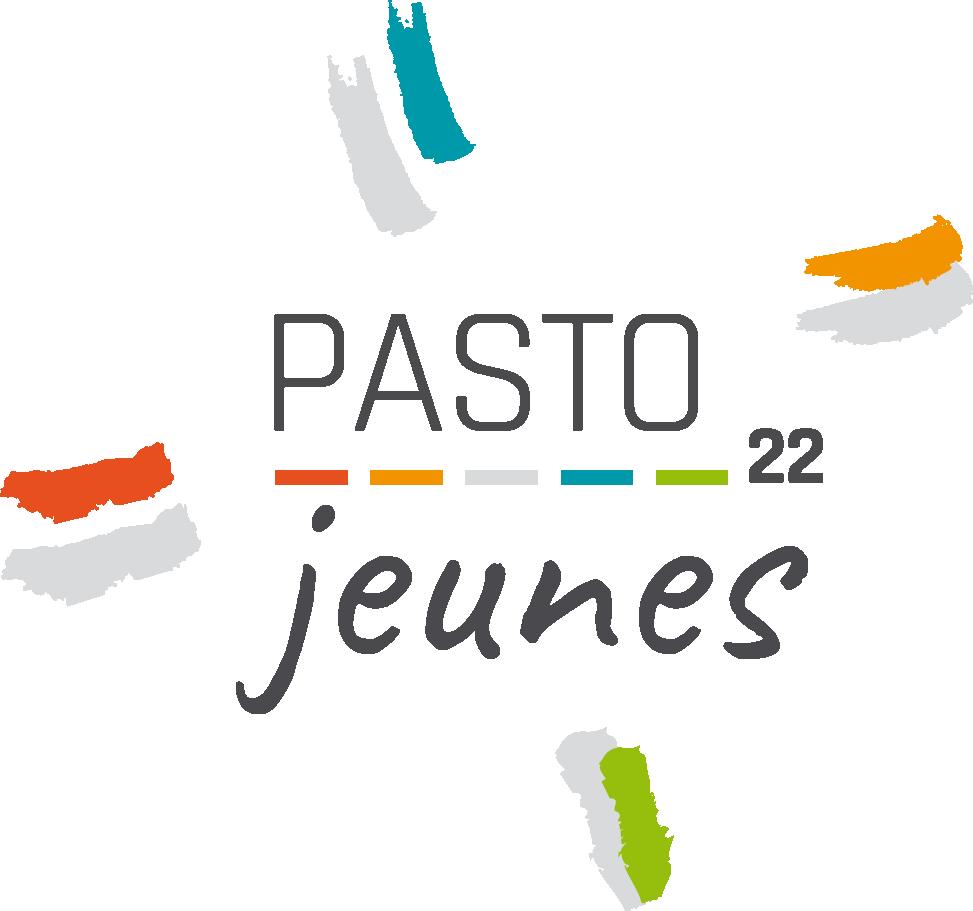
La Croix is then entrusted by a group of young Philippins to a group of young French on Sundays in 1996, during the celebration of the 11th World Youth Day of the Diocese of Rome, on the Saint-SaintRock.A few hours later, the young French people wear the cross into their country, where it entered the triumphant entry into the cathedral of Chartres, and where the same evening, in its presence, is celebrated the Mass of the Palm branches.This new pilgrimage to visit 90 dioceses and movements, as well as Germany and the Netherlands.She goes to Berlin in particular where the Holy Father has a meeting with the young people of the capital.The cross stays there all night with young people collected in prayer.
In 1997, La Croix continued its pilgrimage in France with small detours in Austria and Belgium, it arrived in Paris in August for the 12th World Youth Day, which attracts, to the general surprise of the French and the organizers themselves, more than a million pilgrims during the final gathering on the Longchamp racecourse.
Italian fervor
In 1998, during the celebration of the 13th World Youth Day of the Diocese of Rome, on Place Saint-Pierre, a delegation of young French people gave the cross to a delegation of young Italians, with a view to the planned world meetingin Rome on the occasion of the great jubilee of the year 2000.In his home Sunday homily, John Paul II says: "Dear young people, the message of the cross is today repropossed to you.It is up to you, who will be the adults of the third millennium, that this cross is entrusted which will be given a little by a group of young French people to a delegation of youth in Rome and Italy.From Rome to Buenos Aires;from Buenos Aires to Saint-Jacques-de-Compostela;from Saint-Jacques-de-Compostela in Czestochowa;from Jasna Góra to Denver;from Denver to Manila;from Manila to Paris;This cross widen with young people, from one country to another, from one continent to another.Your choice, young Christians, is clear: to discover in the cross of Christ the meaning of your existence and the source of your missionary enthusiasm ».
After this celebration, the cross begins to browse the whole Italian territory.This two -year route culminates between August 15 and 20, 2000 with this historic rally organized in Rome for the 15th JMJ.The cross is the protagonist of an imposing way of the cross which, starting from the Roman forum arrives at the Colosseum, seeing thousands of young people approach the sacrament of reconciliation at Circo Massimo, and more than two million people participate in massclosing celebrated by the Holy Father in Tor Vergata.
A vast epic across North America
In 2001, again on Saint-Pierre square for the celebration of the 16th World Youth Day of the Diocese of Rome, a delegation of young Italians put the cross to a group of young people from Canada.After crossing the Atlantic again, the cross begins its long pilgrimage in the immense Canadian territory: traveling on private or line planes, dragged by toboggan dogs, transported by crane, on tractors, on boatsSailing and fishing, she visits parishes, young prisons, schools, universities, national monuments, shopping centers, center streets, parks and nights of night life.
In 2002, the cross continued its trip to Canada, with a small detour by the United States in February, when it was worn in New York to the “Ground Zero”, as a sign of hope for the American people after the tragedy ofSeptember 11, 2001.Then the cross returns to Canada.On April 28, a group of young people from Ontario and Quebec (called “porters”), leaves with the Cross of the Cathedral Marie Reine du Monde de Montréal, to wear it on foot to Toronto, for a pilgrimage of43 days: wherever it stops, during this long trip, the cross attracts a lot of people in prayer, who come to touch it and kiss it with fervor.
In Toronto, La Croix remains with young people for the 17th World Youth Day, where it is placed at the center of all the main celebrations of this last world youth gathering with John Paul II.After the JMJ of Toronto, the cross returned to Europe, where it travels to the Czech Republic until the end of the year.
A tour of Europe with the Marie's icon
From March 21 to April 5, 2003 The Cross went to Ireland, returning to Rome in time for twice on Sundays, when young Canadians entrust it to young people from Germany, host country of the 2005 world meeting.At the end of the Mass of the Palm, John Paul II gave young people a reproduction of the icon of Marie Salus Populi Romani: "To the delegation from Germany, I entrusts today the icon of Marie.Now, with La Croix, she will accompany the World Youth Days.It will be a sign of the maternal presence of Mary alongside young people, called, like the apostle John, to welcome him in their lives ".This reproduction of the icon, the original of which is preserved in the Sainte-Marie-Majeure basilica in Rome, occupied a place of choice during the celebrations of the WYD 2000 on Tor Vergata.
The cross and the icon, now begin a vast pilgrimage through different European countries on the way to Germany.They visit Norway, Spain, Luxembourg, Austria, Poland, Slovakia, the Czech Republic, Slovenia, Hungary, Romania, Croatia, Bosnia and Herzegovina, Sweden, Lithuania,Denmark, Portugal, France, Ireland, the Netherlands and Switzerland.During the visit to Spain, the cross and the icon are present during the canonization of several Spanish saints and during a large gathering of 600,000 young people with Jean-Paul II in Madrid.
The trip through Europe continues in 2004.The cross and the icon go to England, Wales, Scotland, Italy, Belgium, Bulgaria and again in Bosnia and Herzegovina.On April 4, the day of the Palm Festival, the Cross and the icon begin their pilgrimage to the dioceses of Germany by entering the Porte de Brandenburg in Berlin.This event is broadcast on giant screens installed in Place Saint-Pierre for the celebration in Rome of the 19th World Youth Day.Pope John Paul II talks about the cross in his homily.He reminds young people that 20 years had already passed since he had entrusted the cross of the holy year to young people in the world.He then said to them: "Since that moment, the cross has continued to cross many countries, in preparation at the World Youth Days.During her pilgrimages, she traveled the continents: like a torch of hand in hand, she was transported from country to countries;It has become the luminous sign of confidence that animates the young generations of the third millennium.Today, it is in Berlin!»»
The pilgrimage to Germany continues in 2005 and it ends with a 40 -day Dresden march in Cologne where the cross and the icon participate in the XXth Youth Day.They are present when young people from around the world meet the new Pope Benedict XVI, child of the country elected to the succession of John Paul II in April.After the celebrations, the cross leaves for Rome because it requires urgent repairs, after these long months of wanderings.
Diving to Africa and Oceania
On Sunday of the 2006 twigs, a delegation of young Germans gives the cross and the icon to their Australian counterparts.The cross and the icon begin their long journey to Australia first passing through Africa.In 2006, they visited Senegal, Guinea Bissau, Gambia, Ghana, Togo, Burkina Faso, Niger, Cameroon, Gabon, Congo-Brazzaville, Burundi, Rwanda, Tanzania, Malawi andZambia.Innumerable obstacles are overcome so that as many young Africans as possible can pray in the presence of the cross and the icon.
The Tour in Africa continued in 2007, with Botswana, South Africa, Swaziland, Mozambique and Madagascar.Many adventures can be narrated about the trip of the cross and the icon on the trailer of a truck throughout the roads of Africa.Crowds come to cheer them on with songs and dances and that attracts people from other churches and other religions.Meetings with the cross and the icon are a great opportunity to encourage young people to become a "non-violent generation".They organize peace marches.In countries that had undergone tribal wars and genocides, the call "never again" sounds clear and strong when they all meet together around the cross and the icon.
After the intense and rich tour in Africa, the long trip to Australia continues with short stages in Asia to reach the oceania.They visit Korea, the Philippines, Guam, the Marshall Islands, Chuuk (in micronesia), Palau, the Papua New Guinea, the Solomon Islands, Timor Est, Kiribati, Samoa, the American Samoa, Tahiti, Tonga, Fiji,New Caledonia, the Vanuatu archipelago and New Zealand.For countries so far from each other and the rest of the world, the main impression of young people is that the cross and the icon brought them closer to the outside world.
During this stay in sometimes little -known territories, these symbols of the JMJont was often welcomed by groups of young people dressed in their traditional clothes and which threw them flowers.They traveled on boats through the jungles and were worn in procession around the different islands.They contributed to reconciliation where there were tensions (especially in Timor), and comforted young people who had recently experienced a terrible earthquake and tsunami (Solomon Islands).
In July 2007 the cross and the icon arrived in Australia and began their pilgrimage to the host country of the next WYD.The young people of the JCI (Journey of the Cross and Icon) hold a newspaper in which they annotate all the details of the pilgrimage, starting with the arrival in Sydney and the ceremony of delivery by New Zealanders during which young Maorisand Australian aborigines perform their respective ritual ceremonies.The pages of the newspaper speak of sea and desert, hot and cold, conversions and emotions, isolated communities and warm welcome.
The pilgrimage to Australia continues in 2008 and ends with a 15 -day walk in the Archdiocese of Sydney until the XXIIIth World Youth Day with Pope Benoît XVI and young people around the world.La Croix also takes part in the Stations of the Cross which takes place in the streets and the port of Sydney.The pope talks about the symbols of the WYD in his speech during the Saturday night vigil.He says: "Gathered in front of this cross which has traveled so much and in front of the icon of Marie, under the splendid constellation of the Southern Cross, we pray.Tonight, I pray for you and for young people around the world ”.He asked young people to do this question: "As witnesses to Christ, what is our answer to a divided and fragmented world?How can we offer the hope of peace, healing and harmony to these “stations”, places of conflict, suffering and tension, where you have chosen to stop with this cross of World Dayof the youth ?"After World Youth Day, the cross and the icon fly directly to Rome.After a visit to Lourdes in France as part of the jubilee of the appearances of Marie in Bernadette, they return to Rome for some repairs.
The return to Europe
Palm Sunday of 2009 is the occasion for the new Cross and icon delivery.The cross and the icon leave for Spain where they receive a warm welcome in the Cathedral of Madrid.Then, before continuing the pilgrimage in Spain, the cross flies to Italy and Poland for the celebrations of the 15th anniversary of the delivery of the Cross of the Holy Years to young people by John Paul II.She also visits the city of Aquila in Italy destroyed by a violent earthquake.Then the cross and the icon leave for Spain, starting the pilgrimage with the Archdiocese of Madrid.
The cross and the icon spend the year 2010 visiting Spain and its islands including the Canaries.They also make two brief visits to Lourdes and Fatima.Wherever they spend very beautiful ceremonies are organized.
The pilgrimage continues in Spain in 2011 until the XXVIE World Youth Day in Madrid.The cross and the icon are present at all events, in particular the Stations of the Cross through the streets of Madrid.It is this time immediately after the final mass that the presentation of the symbols takes place, and these are transferred from the hands of the young Spaniards to those of the young Brazilians.Benoît XVI said to them: "Dear friends, before saying goodbye, and while the young people of Spain give those of Brazil the cross of the World Youth Days, as a successor of Peter, I entrust to all thoseWho are present here this great task: bring the knowledge and love of Christ to the whole world.He asks that you are his apostles in this 21st century and the messengers of his joy.May you not disappoint it! "
To meet Brazilian immensities
In September 2011, the cross and the icon started their turn in Brazil.The young people of Sao Paulo welcome them with enthusiasm and leave for a new pilgrimage called “Bote Fé”.
The Tour du Brazil continues in 2012.He also crosses borders to visit two Mariaux sanctuaries in Uruguay.Brazil is so vast and the dioceses so numerous that the cross and the icon can only remain two or three days in each diocese.These days are rich in celebrations, ceremonies, visits to schools, institutions, patients, prisoners, those who seek to get out of the outbuildings and to so many others who get comfort by touching the cross.
In 2013 the "Boter Fé" continues its Tour du Brazil and arrived to Rio de Janeiro for the XXVIII World Youth Day.Pope Francis, who then saw his first apostolic journey, talks about the JMJ cross during the Stations of the Cross in Copacabana.He reminds young people that the cross was given to them by John Paul II in 1984.And he said to them: "Since then, the cross has traveled all the continents and has crossed the most varied sectors of human existence, remaining almost imbued with the life situations of many young people, who have seen it and the'.Dear brothers, no one can touch the cross of Jesus without leaving something of himself and without carrying something from the cross of Jesus in his life.While you accompany the Lord this evening, I would like three questions to resonate in your hearts: what have you left on the cross, you, dear young people from Brazil, in these two years during which she has crisscrossed your immense country?And what has the cross of Jesus left in each of you?And, finally, what does this cross teaches our life?»»
An immersion in fractures of Eastern Europe
The cross and the icon are again in Rome for the 2014 twice of twigs, and they are given to the young people of Poland by young Brazilians.They will celebrate Easter in Poznan.In June the pilgrimage passes the border to go to other countries in central and eastern Europe.The rest of the year will be devoted to visits to the cross and the icon in Belarus, Lithuania, Latvia, Russia, Ukraine, Moldova, Romania, Hungary, Slovakia and Czech Republic.The cross and the icon traveled long distances during that year, carrying with them a message of peace.This message was particularly felt in Ukraine, where young people prayer turned into a cry in favor of peace and a sign of solidarity with their peers from the eastern part of the country, struck by the Donbass War.
Between 2015 and 2016, the cross and the icon cross Poland from one end to the other until World Youth Day in Krakow in July 2016.Here again, La Croix plays a leading role during the Cross Cross celebration of the WYD.Indeed, while this creative and moving liturgy took place, the cross was transported through Błonia park by different groups of young people representing the universality of the Church and the sufferings that persist in the world today.
A sign of hope for the young people of the 21st century
The Cross and the icon return to Rome after the WYD and participate in various meetings that were held in the Paul VI room, including the hearing of the Holy Father with the victims of the earthquake which devastated the center of the'Italy in 2016.Then, on Sundays of the 2017 branches, in Place Saint-Pierre, the young people Polish put them back to a delegation of young people from Panama.The cross and the icon crossed the Atlantic, this time to undertake a pilgrimage around Central America and in neighboring countries, notably Mexico, with the highlight of Panama's PPD in January 2019.
In this year 2020, the Pandemic of COVVI-19 prevented the organization of the transmission of the cross to the young Portuguese during the Mass of the Palm, on April 5, 2020, celebrated on camera, but this tradition is held this SundayNovember 22.This transmission of the cross therefore marks an important symbolic step towards the Lisbon WYD, which will not be held in the summer of 2022 as initially planned, but in the summer of 2023.It will be the first time that Portugal has welcomed this world event, 10 years after another Lusophone country, Brazil.The course of the Cross will therefore be able to resume its course, as a sign of hope for the young people of the 21st century in search of meaning and roots.
(Source: dicastery for laity, family and life)


